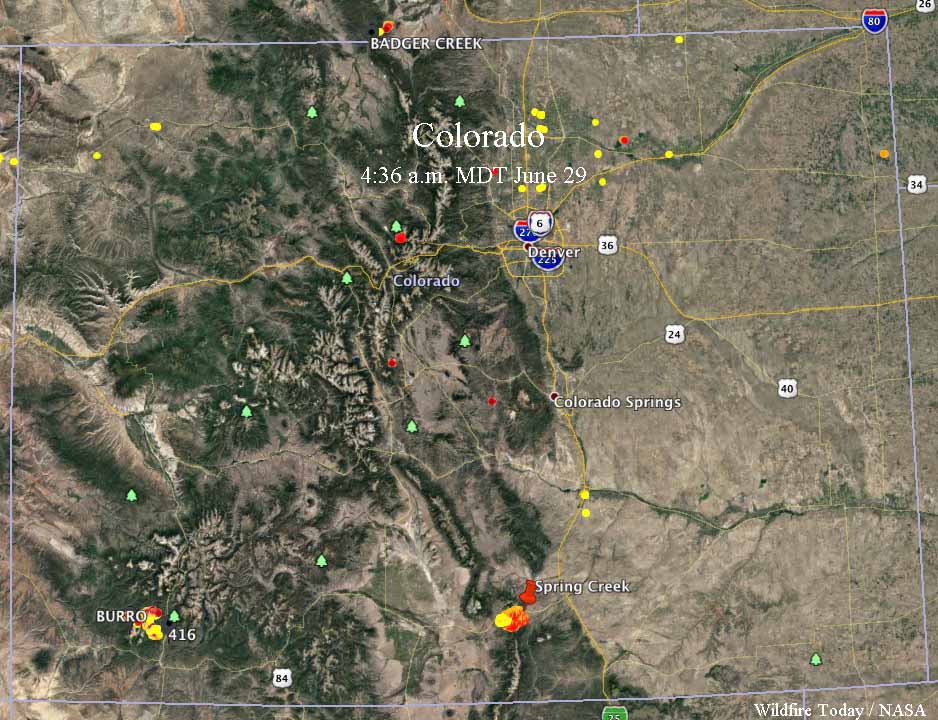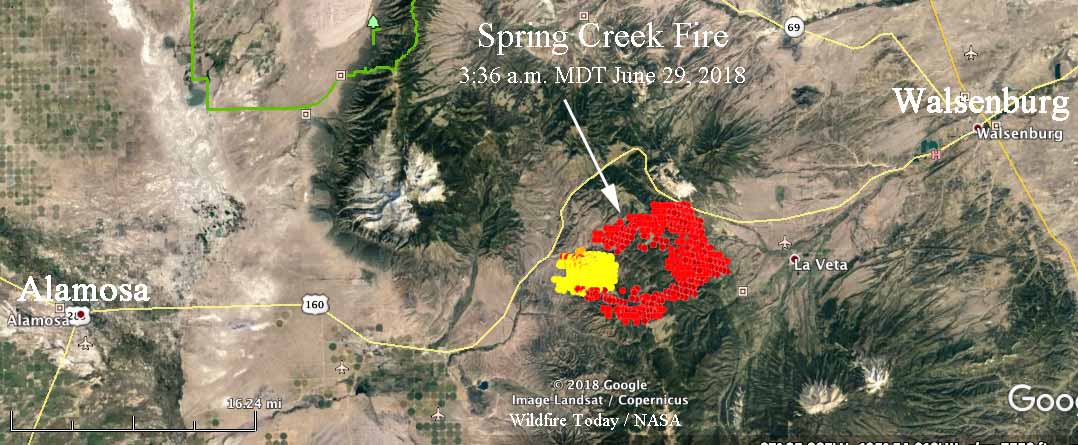Above: The Spring Creek Fire, based on data from 1 p.m. MDT June 30, 2018. (Cropped by Wildfire Today from a map prepared by the Incident Management Team, with a modified legend.)
(Updated at 8 a.m. MDT July 1, 2018)
The Spring Creek Fire grew by about 7,000 acres Saturday to bring the size up to 41,292 acres. We don’t have a product from an overnight mapping flight due to clouds that obscured most of the fire, trapping the heat signatures that would normally be detected by sensors on the aircraft.
Mandatory evacuations were ordered on June 30 for the area north and east of Trinchera Ranch Road, and south of Highway 160 in the Fort Garland area. There is an evacuation shelter at the Blanca Fort Garland Community Center.
CLICK HERE to see all of the articles on Wildfire Today about the Spring Creek Fire.
The map produced by the Incident Management Team (IMT) for Sunday indicates that none of the perimeter has any held or contained fireline, and reports issued also show zero percent containment. If accurate, this is unusual for a fire that has been burning for five days and has 480 personnel assigned, including 10 hand crews, 32 engines, and 7 helicopters. But as we have often stated, containment numbers issued by some IMTs are notoriously unreliable.
As the fire expands over a larger area, the command and control becomes more difficult. To mitigate this, a second IMT has been mobilized.
The current IMT, with Incident Commander Shane Greer, explained how this will work:
This increased staffing and additional management will allow fire managers to continue implementing strategies and tactics that prioritize firefighter and public safety while working to protect values at risk. Tomorrow, the Rocky Mountain Incident Management Team Blue will arrive and begin coordinating with Team Black management to ensure a successful transfer of information. It is expected that, on Monday, the fire will be split into two separate management areas. The current Team Black will remain in command of all fire areas south of Highway 160. The incoming Team Blue will take command of all fire areas north of Highway 160. The two teams will work in very close coordination to ensure the public continues receiving accurate and consistent information.
A public meeting is scheduled for Sunday, July 1 at 6:00 p.m. Fire officials will provide updates about the ongoing suppression efforts and respond to questions from the audience. The meeting will be at the La Veta High School Gymnasium (109 E. Garland Street, La Veta, Colorado). Space is limited. The meeting will also be streamed on Facebook live.(www.facebook.com/springfire2018).
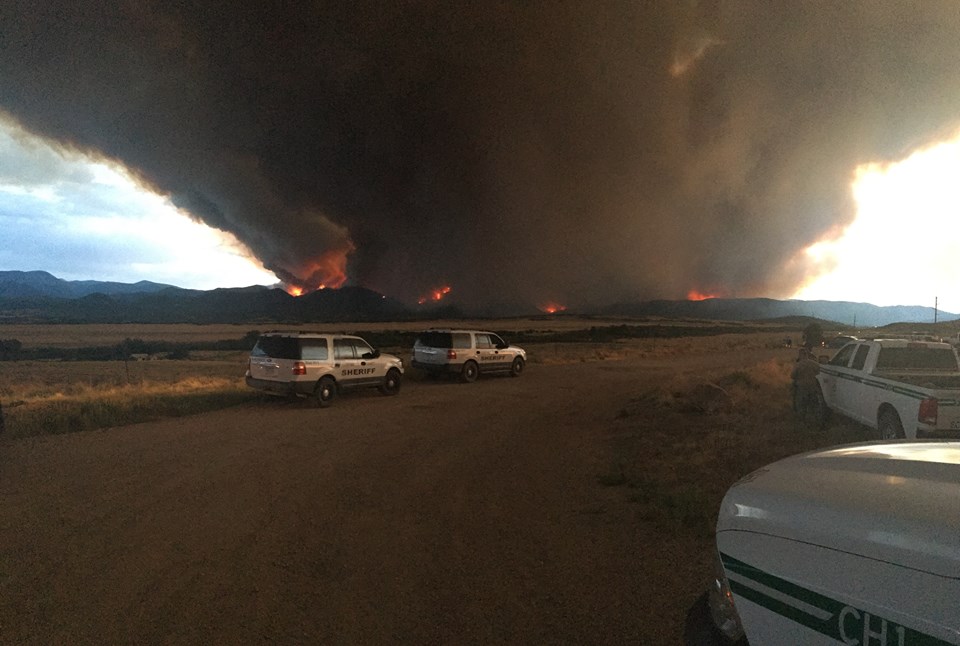
(UPDATED at 6:28 p.m. MDT June 30, 2018)
Here is a map showing heat detected on the Spring Creek Fire at 1:01 p.m. MDT June 30, 2018.

CDOT reports that the closure of US 160 between Fort Garland and La Veta and the closure of CO 12 between Cuchara and La Veta, will continue. The fire is now pretty well established on the north sides of Highway 160 and Mt. Maestas. There has been growth there, as well as on the southeast side in the last 18 hours. The west side close to Hwy. 160 is remaining pretty stable.
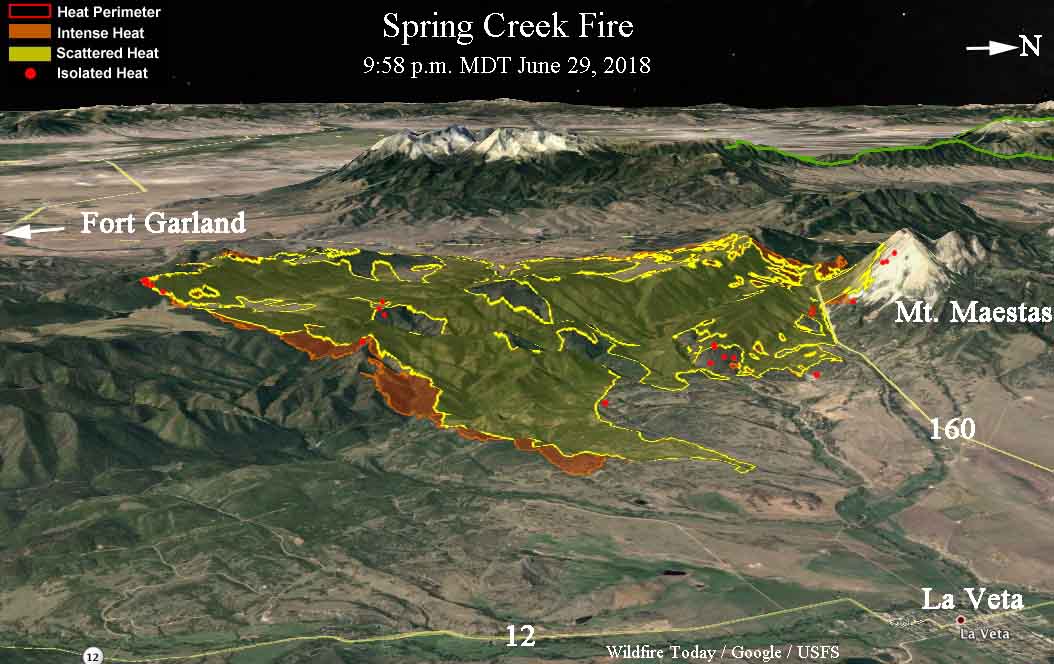
(Originally published at 6:41 a.m. MDT June 30, 2018)
The Spring Creek Fire 51 miles southwest of Pueblo, Colorado has grown closer to the small town of La Veta, population 800. A mapping flight at 9:58 p.m. Friday showed that it was three miles west of the community. On the other side of the fire it was eight miles southwest of Fort Garland.
It has crossed Highway 160, which is closed at La Veta Pass, and is working its way up Mt. Maestas. Near the top of the 11,000-foot ridge on the mountain there is much less fuel, which slows the fire. Firefighters are no doubt hoping to extinguish any spot fires that may cross the ridge and they will want to keep the fire from burning around the forested lower-slopes on the east and west sides.
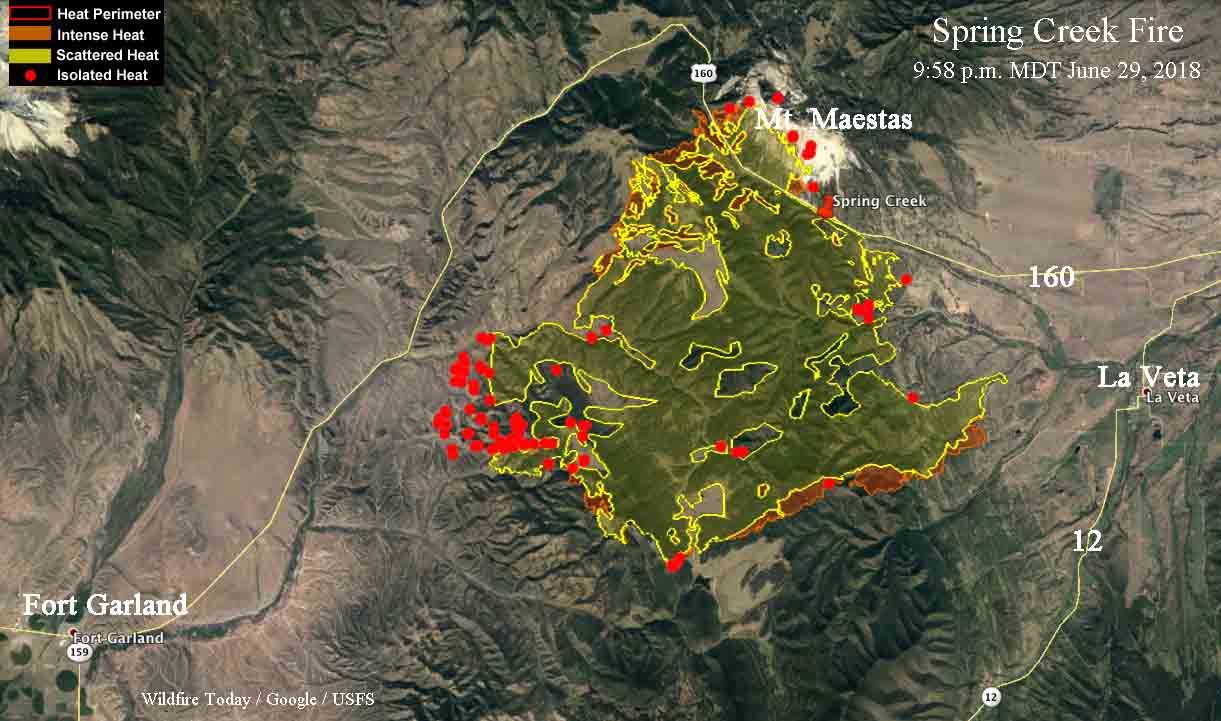
Officially, the fire is 33,956 acres, but that is based on information from Friday afternoon at 2:40 as determined by Colorado’s MultiMission Aircraft. Overnight mapping by a U.S. Forest Service aircraft puts it closer to 38,000 acres. Most of the fire is on private land, with smaller portions on BLM, State, and U.S. Forest Service areas.
The correct name of the fire is “Spring Creek”, but more often it is referred to as the “Spring Fire”.



